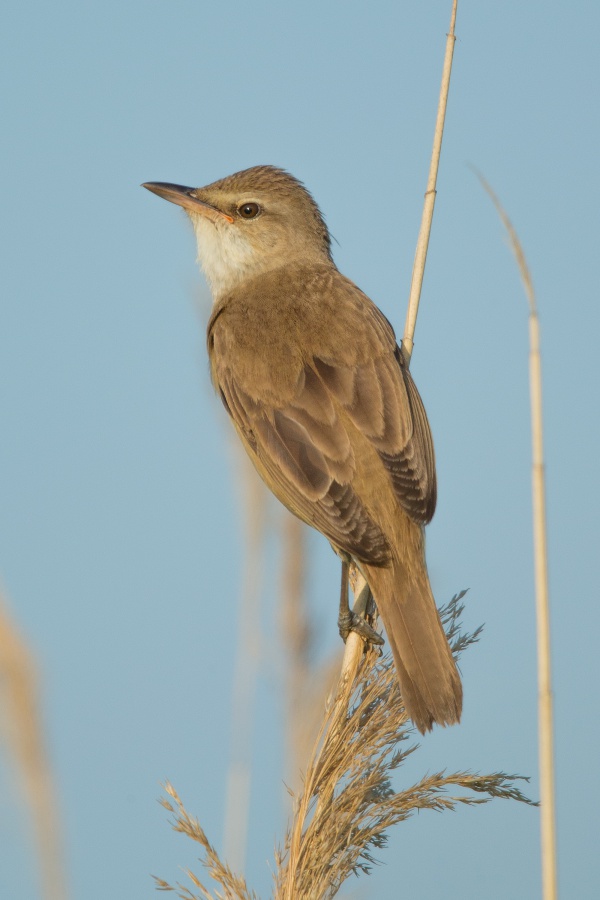Facts About Great reed warbler
The great reed warbler is a fascinating bird, notable for being the largest of the European warblers. Found throughout mainland Europe and the western Palearctic, these avians migrate to sub-Saharan Africa during the winter. They are particularly keen on breeding in reed beds but exhibit considerable flexibility in their winter habitats.
An intriguing aspect of great reed warblers is the similarity in appearance between males and females, making it difficult to distinguish the sexes. Their mating strategies can vary; some males practice polygyny, having multiple mates, while others are monogamous, sticking with just one partner.
These birds are approximately the size of a thrush, measuring between 16 and 21 cm in length. They have plain brown plumage on their backs and a soft, buff-colored underside. Their song is distinctive—loud, carrying over long distances, and composed of chattering and creaking sounds. Their diet primarily consists of insects, though they will opportunistically consume small fish or frogs if available.
Male great reed warblers have different songs for different purposes. Longer songs are used to attract females, whereas shorter ones serve to defend their territory against other males.
During the breeding season, they reside in Europe and the western Palearctic, before migrating to tropical Africa for the winter. Although their population numbers can fluctuate, they are not currently considered to be at risk of extinction.
Regarding their young, nestlings are primarily fed insects and spiders. This species is known for rapidly expanding its range when new habitats become available. In their polygynous breeding system, males contribute minimally to raising the young. Females generally prefer males with a greater variety of songs, as this usually indicates healthier offspring. Males defend large territories within reed beds and occasionally employ deceptive tactics to attract more than one female.

 Germany
Germany